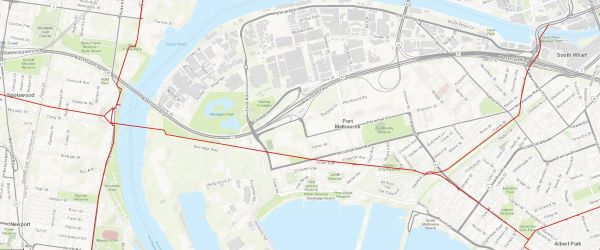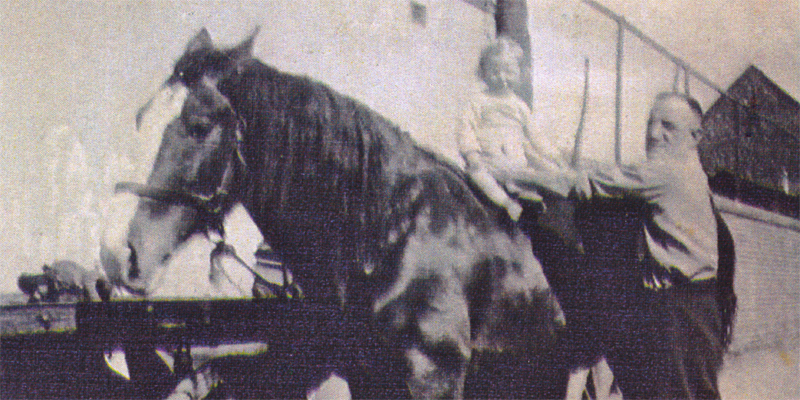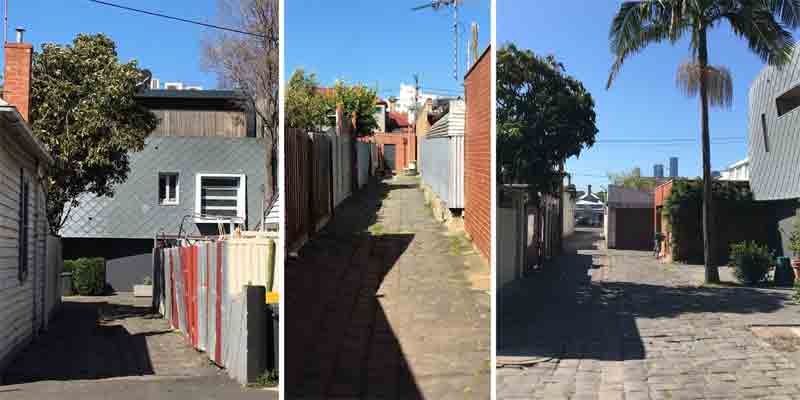Out of Sight, Out of Mind
Melbourne’s Sewer Mains in Port Melbourne (instalment 1 of 3)
by Richard Olive
It may surprise you to know that some of this city’s major and most vital pieces of infrastructure run right through the heart of Port Melbourne, silently serving their function for over 130 years. In fact, not one but two of the city’s sewer mains quietly execute their unenviable duty beneath our unsuspecting feet. I refer to the “Hobsons Bay Main”, which runs under Graham Street and Howe Parade, and the “Melbourne Main” which runs under Ross Street. How surprised will most of the residents of those noble thoroughfares be to learn that the ungodly wastes of over a million Melbournians drift past their doors daily. It is not a selling feature which the estate agents proclaim from the For Sale signs.
Before we descend into the depths, let’s do some scene setting. First, nomenclature: Of course the content of the sewers lends itself to vulgarity and schoolboy humour. So, euphemisms are handy. On a recent tour of the Werribee treatment plant your correspondent noticed that the Melbourne Water guide handled this delicate issue deftly by referring to our bodily wastes as “the two Ps”, or rather small p for pee and capital P for Poo. May we follow her example? While we are on nomenclature, sewage and sewerage are not interchangeable words. Sewage is “the two Ps”, which runs through yet a third P, the Pipes or sewerage system.
Now let us start gently delving into some civil engineering. The p and P immediately become diluted by the flushing water. In turn, this mixture is much further diluted by the discharge from our kitchens, bathrooms and laundries. Liquid industrial wastes contribute further dilution. So by the time the mess goes through the reticulation sewers and the service sewers, it is largely dirty, smelly water when it reaches the Mains. And as for those nasty lumps of P, they have broken down to little more than colourant, suggestive of Hawthorn football jumpers.
By the 1880s, Melbourne’s population had increased to about half a million, and the town was booming. But the malodorous effect of sewage flowing along the street drains led to the city having the unwanted nickname of Smellbourne. Even worse than the odour was the rising death toll from typhoid and other diseases. Something had to be done. Melbourne was not alone with this problem. Various solutions were being tried in different parts of the world. Implementation was impacted by local topography, geology and proximity to the ocean.
A major unsettled question was whether to combine the sewage with storm water runoff. Combined systems became common in North America, to the eventual regret of the citizenry there. The sewage led to the contamination of the far greater quantity of stormwater, leading to major pollution of the Great Lakes and the St Lawrence River. Not until the 1970s were these sins of the past remedied, at great cost and inconvenience, by separating the two streams.
These questions were studied by an English expert, James Mansergh, and engineers of the nascent Melbourne and Metropolitan Board of Works, notably William Thwaites. With impressive foresight they resolved that Melbourne would have a separated system and further, that no untreated sewage would be allowed to enter Port Phillip Bay. All the sewage would be conducted to the natural low point of where the Yarra entered the Bay (Fishermans Bend/Spotswood), from where it would be pumped to a sufficient elevation to allow it to flow under gravity to an agricultural treatment facility at Werribee.
To arrive at the Spotswood pumping facility (now Scienceworks), all of the effluent from the south and east of the Yarra, and even some from the north side, including the city itself, would inevitably flow through Port Melbourne. Why inevitably? Well, we must recall the First Law of Civil Engineering, namely, “Water Flows Downhill”. And Port Melbourne, being at the lowest point, was doomed to be at the receiving end. So the Hobsons Bay Main runs right around the beachside from Sandringham, to intercept all the service sewers running towards the Bay, while the Melbourne Main brought the waste from along the shores of the Yarra. The two join beside the Port Melbourne Tennis Club, with the combined flow heading down Howe Parade and on across the shipping container flats towards Spotswood.
Because the flow had to progress continuously downhill, the mains were the deepest part of the system, and had to be tunnelled, as distinct from being trenched. Through Port Melbourne this meant tunnelling through saturated silt and sand, a particularly challenging task even today, let alone in the 1890s when geo-mechanics was an unknown science. The work, all by hand, was truly heroic – a forgotten triumph by our predecessors which deserves memory.
Patrons at the All England Eleven Hotel, which formerly stood on the corner of Rouse and Princess Streets, were honoured to be the first Melbournians to christen the system. That was 17 August 1897. Their deed is commemorated, by a plaque set into the footpath adjacent to the site. Details such as whether it was a P or a p, who made the deposit and whether it was standing or sitting were sadly not recorded, stymying plans for a re-enactment on the date of the centenary.
Likewise, no record exists as to whether the noble citizens of Port Melbourne ever protested against what was to flow down upon them, or whether the fancy ladies of Brighton and Toorak ever uttered a ‘by-your-leave’ or a ‘hope-you-don’t-mind’ as they pulled the chain. One can surmise, however, that they would have protested, “Oh, but ours doesn’t smell, not like yours, you working class riff-raff.” Sorry, ladies, your claim does not pass the sniff test.
In retrospect we can say that a more savvy Port society should have imposed a toll back then. Penny a p? Tuppence a P? We would have all been rich by now.
Future instalments of this saga shall describe some of the challenges and disasters which befell the tunnelling of the two mains.
References
Dingle, Tony and Rasmussen, Carolyn. Vital Connections; Melbourne and its Board of Works 1891 – 1991. Penguin Australia 1991
La Nauze, Robert D. Engineer to Marvellous Melbourne – The Life and Times of William Thwaites. Australian Scholarly Publishing, 2011.




1 Comments
Victor
Most interesting, thanks!